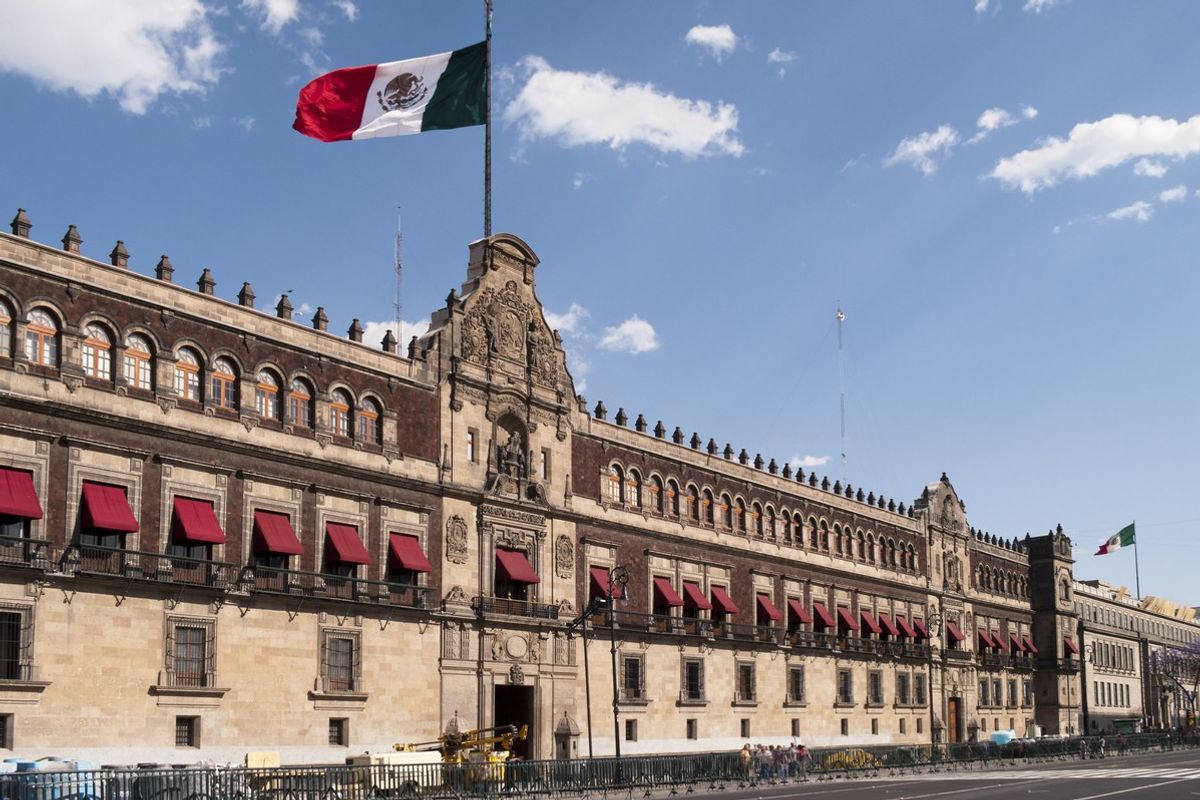The reach of Latin American illicit trafficking networks extends well beyond the region, according to former U.S. diplomat Celina Realuyo, now a professor at the National Defense University. Realuyo spoke with The Cipher Brief about the nexus between crime and terror, noting that these networks – and the organized criminal groups that run them – are now tied to Hezbollah and other global terrorist groups.
The Cipher Brief: How would you assess the threat of illicit trafficking networks in Latin America to U.S. national security? What makes the U.S. an attractive operating environment for these criminal groups?
Celina Realuyo: Throughout history, the U.S. and Latin America have had close political, economic, and cultural ties. The same can be said about illicit trafficking, as the U.S. has always served as a lucrative destination for narcotics, people, contraband, and money laundering. Since profit is the main driver of transnational criminal organizations, U.S. demand for illicit goods and services, and its status as the world’s largest economy make it the preferred market and operating environment for many of these illicit networks. Unfortunately, the U.S. continues to be the top consumer of illegal narcotics in the world.
With the publication of the U.S. Strategy to Combat Transnational Organized Crime in 2011, transnational criminal organizations were formally recognized as a threat to U.S. national security, undermining the legitimate economy, corrupting institutions, moving “bad people and bad products” into the U.S., and threatening the health and welfare of our citizens. Drug, arms, and human trafficking, money laundering, cybercrime, and the nexus between terrorism and crime were among the leading concerns included in this national security strategy. Many of these activities emanate from Latin America and are conducted by Latin American cartels, gangs, and traffickers who use graft, corruption, and violence to promote their criminal agendas.
TCB: What has allowed these illicit networks to emerge so successfully in Latin America?
CR: Latin America has been blessed with abundant natural resources, excellent trade routes, and good climate. According to the World Bank, the region has some of the most dynamic and fastest growing economies in the world. Unfortunately, those same attributes have empowered illicit groups to become the most powerful and richest in the world, particularly through cocaine, heroin, marijuana, and now synthetic drug trafficking. The Mexican drug cartels, like Sinaloa and Los Zetas, the FARC in Colombia, and Shining Path in Peru, are among the most notorious illicit networks (terrorists, criminals, and proliferators) in Latin America.
A climate of corruption, impunity, and inequality has allowed these transnational criminal organizations to flourish in Latin America. With young democracies and weak government institutions, Latin America has struggled to maintain law and order in the face of gangs and crime groups. Central America has the highest homicide rates in the world according the UN Office of Drugs and Crime. Transnational criminal groups, flush with cash, are able to “pay to play” and corrupt or co-opt government officials who are supposed to be responsible for citizen security. With a lack of legitimate economic opportunities, these criminal networks are able to recruit and retain large numbers of young men to control the supply routes and terrorize local populations through the use of violence. Given the levels of corruption, extortion, and violence, there is lack of public trust in government in many parts of Latin America. Citizens don’t even bother to report crimes since only 3 percent of them are ever successfully prosecuted.
TCB: How are the illicit trafficking networks in Latin America connected to larger global terrorism networks, such as Hezbollah? What role do the Latin American groups play in advancing these global terrorism groups’ agendas and vice versa?
CR: Globalization has empowered transnational organized crime in terms of the magnitude, velocity, and wealth generated by their illicit activities. These illicit networks have capitalized on the free movement of goods, services, people, and capital that have made the world more prosperous and interconnected than ever before. Drug trafficking remains the most lucrative crime in the world, and the cocaine trade originating from South America generates billions of dollars of profit; these markets reach as far as China and Russia. There are reports of increased interaction between the Mexican cartels and the Russian mafia in the global narcotics trade. While criminals are focused on revenue generation and terrorists are driven by political motivations, we are witnessing a convergence of terrorism and crime or even hybrid groups engaged in both activities. The narco-insurgency of the FARC in Colombia serves as an example of this terror-crime convergence in Latin America. Cocaine trafficking allowed the FARC, which aspired to overthrow the Colombian government, to sustain its armed insurgency for over 50 years.
Lebanese Hezbollah is an example of terror-crime nexus on a more global basis. It is important to remember that before the tragic attacks of September 11 by al-Qaeda, Hezbollah was the terrorist group responsible for the most number of American terrorist victims. Currently, Hezbollah is propping up the Assad regime in Syria by providing foreign fighters to conduct the civil war. This designated terrorist group uses global trade and finance to engage in international drug trafficking and money laundering schemes that help fund the militant wing of Lebanese Hezbollah. The case of the Lebanese Canadian Bank illustrated how Hezbollah was laundering proceeds from Latin American cocaine sold into European markets through the international financial system to fund its militancy. Lebanese Hezbollah leverages segments of the Lebanese Shiite diaspora in Latin America and elsewhere to raise charitable donations, launder the proceeds of crime, and engage in trade-based money laundering to finance its terrorist agenda. The Tri-Border Region of South America—Argentina, Brazil and Paraguay—is one such area that Lebanese Hezbollah has been known to have sympathizers and fundraisers.
TCB: How does the connection between the illicit trafficking networks in Latin America and the global terrorist groups complicate the United States’ ability to combat the Latin American groups? Could we expect Hezbollah or other global terrorist groups to retaliate against U.S. interests if the U.S. started cracking down on the Latin American illicit networks?
CR: Illicit networks comprised of terrorists, criminals, and proliferators do not respect the rule of law or borders. They take advantage of globalization to move goods, people, and services around the world, and are now a real threat to the stability and sovereignty of nation states around the world. The U.S. considers these terrorist and criminal groups a threat to national security and is devising strategies to better understand, detect, disrupt, and dismantle these networks. As such, the U.S. is monitoring illicit networks across the globe. Hezbollah’s fundraising activities in Latin America have been scrutinized for years, and there have been fears that Hezbollah sleeper cells could be activated to conduct attacks against U.S. interests at the instruction of its benefactor, Iran. More recently, there is greater concern that ISIS might leverage Latin American criminal networks to help them infiltrate the U.S. from the southern border. The migration crisis of 2014 that overwhelmed U.S. border patrol and immigration officials demonstrated how vulnerable our borders are and has become one of the hotly debated topics in the 2016 presidential campaign.
In the past, criminal organizations or mafias were local in terms of their activities and influence and were a local law enforcement issue. These groups have now gone “global” with new markets, unprecedented wealth to undermine economies and governments, and the ability to use violence to protect their commercial interests. Syndicated columnist Moises Naim has identified a growing threat that the criminal groups could establish what he calls, “mafia states,” where the government itself is directing and conducting criminal activities like narcotics trafficking. Some security analysts already describe North Korea, Russia, and Venezuela as mafia states that are destabilizing their respective regions.
TCB: What can we reasonably expect Latin American governments to do to help combat these illicit trafficking networks? What can the U.S. government do to strengthen Latin America’s capacity to combat these groups?
CR: Latin American governments need to combat corruption and impunity to restore the faith and confidence of their citizens. Citizen security, corruption, and the lack economic opportunities are the leading concerns of average citizens in national elections throughout the region. Security sector reform to strengthen the police, and in some instances the military, to combat transnational organized crime are essential for good governance. The recent presidential election in Guatemala brought Jimmy Morales, a comedian and political novice, to power, illustrating how the people condemned government corruption and rejected the political elites. Governments need to double down on their efforts to improve education and employment opportunities to bolster the legal economy and counter the illicit economy that fuels transnational organized crime.
The U.S. should continue to support its Latin American partners through its foreign assistance programs. Security sector reform, robust economic and social development programs, and institution building in the judicial sector are necessary to strengthen governments in the region. The U.S. has demonstrated its commitment to aid its neighbors through programs like Plan Colombia, the Merida Initiative for Mexico, and the Central American Regional Security Initiative (CARSI.) In February 2015, the Obama Administration requested $1 billion to support a new Central American Engagement Strategy particular focused on the Northern Triangle countries of El Salvador, Guatemala, and Honduras to stem the flow of unaccompanied minors and address the violence and economic crisis plaguing that region.









